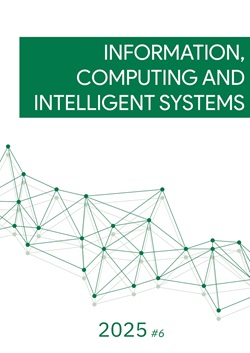Waste Management Model with Timed Colored Petri Nets
DOI:
https://doi.org/10.20535/2786-8729.6.2025.333736Keywords:
waste management, waste management optimization, discrete event systems, Petri nets, vehicle routing problemAbstract
In Progress
References
The Kyiv municipal WM company “Kyivcomunservice,” Accessed: Aug. 8, 2025. [Online]. Available: https://kks.kyiv.ua/en/.
C. Simon and S. Haag, “Pairing state automata and Petri nets – Simulation of processes in logistics,” in Proc. 38th ECMS Int. Conf. on Modelling and Simulation, Jun. 2024. https://doi.org/10.7148/2024-0474.
J. I. Latorre-Biel, D. Ferone, Á. A. Juan, and J. Faulin, “Combining simheuristics with Petri nets for solving the stochastic vehicle routing problem with correlated demands,” Expert Systems with Applications, vol. 168, p. 114240, Jan. 2021. https://doi.org/10.1016/j.eswa.2020.114240.
L. Zhang and J. Li, “Logistics Distribution Process Design Based on Stochastic Petri Nets and Big Data Algorithms,” in Proc. 2022 IEEE 2nd International Conference on Computer Systems (ICCS), Qingdao, China, 2022, pp. 55–59. https://doi.org/10.1109/ICCS56273.2022.9987800.
K. B. Priya and R. Paramasivam, “The Combination of Petri Nets and Queueing Theory,” International Journal of Engineering and Advanced Technology (IJEAT), vol. 9, no. 1S5, pp. 293–294, Dec. 2019. https://doi.org/10.35940/ijeat.A1065.1291S519.
G. Cavone, M. Dotoli and C. Seatzu, “A Survey on Petri Net Models for Freight Logistics and Transportation Systems,” in IEEE Transactions on Intelligent Transportation Systems, vol. 19, no. 6, pp. 1795–1813, June 2018, https://doi.org/10.1109/TITS.2017.2737788.
D. Du, T. Liu, and C. Guo, “Analysis of Container Terminal Handling System Based on Petri Net and ExtendSim,” PROMTT, vol. 35, no. 1, pp. 87–105, Feb. 2023. https://doi.org/10.7307/ptt.v35i1.4196.
T. Kossowski, S. Samolej, and R. Davidrajuh, “Simulation in the GPenSIM Environment of the Movement of Vehicles in the City Based on Their License Plate Numbers,” Electronics, vol. 13, no. 4, p. 683, 2024. https://doi.org/10.3390/electronics13040683.
J. Beliën, L. De Boeck, and J. Van Ackere, “Municipal solid waste collection and management problems: A literature review,” Transportation Science, vol. 48, no. 1, pp. 78–102, 2012, https://doi.org/10.1287/trsc.1120.0448.
T. Benarbia, A. M. Darcherif, and D. J. Sun, “Modelling and performance analysis of smart waste collection system: a Petri nets and discrete event simulation approach,” International Journal of Decision Support Systems, 2019 Vol.4 No.1, pp. 18–40. https://doi.org/10.1504/IJDSS.2019.103668.
A. Ouhbi, H. Berrada, H. Boukachour, A. Farchi and H. Hachimi, “Multi-Trip Vehicle Routing Problem with Time Windows and Resource Synchronization on Heterogeneous Facilities,” Systems, vol. 11, no. 8, p. 412, 2023. [Online]. Available: https://www.mdpi.com/2079-8954/11/8/412.
D. A. Zaitsev, T. R. Shmeleva, and D. E. Probert, “Applying Infinite Petri Nets to the Cybersecurity of Intelligent Networks, Grids and Clouds,” Applied Sciences, vol. 11, no. 24, p. 11870, Dec. 2021, https://doi.org/10.3390/app112411870.
V. Gehlot, P. Rokowski, E. B. Sloane and N. Wickramasinghe, “Taxonomy, Tools, And A Framework For Combining Simulation Models With AI/ML Models,” 2022 Annual Modeling and Simulation Conference (ANNSIM), San Diego, CA, USA, 2022, pp. 18–29, https://doi.org/10.23919/ANNSIM55834.2022.9859494.
Downloads
Published
How to Cite
Issue
Section
License
Copyright (c) 2025 Information, Computing and Intelligent systems

This work is licensed under a Creative Commons Attribution 4.0 International License.




